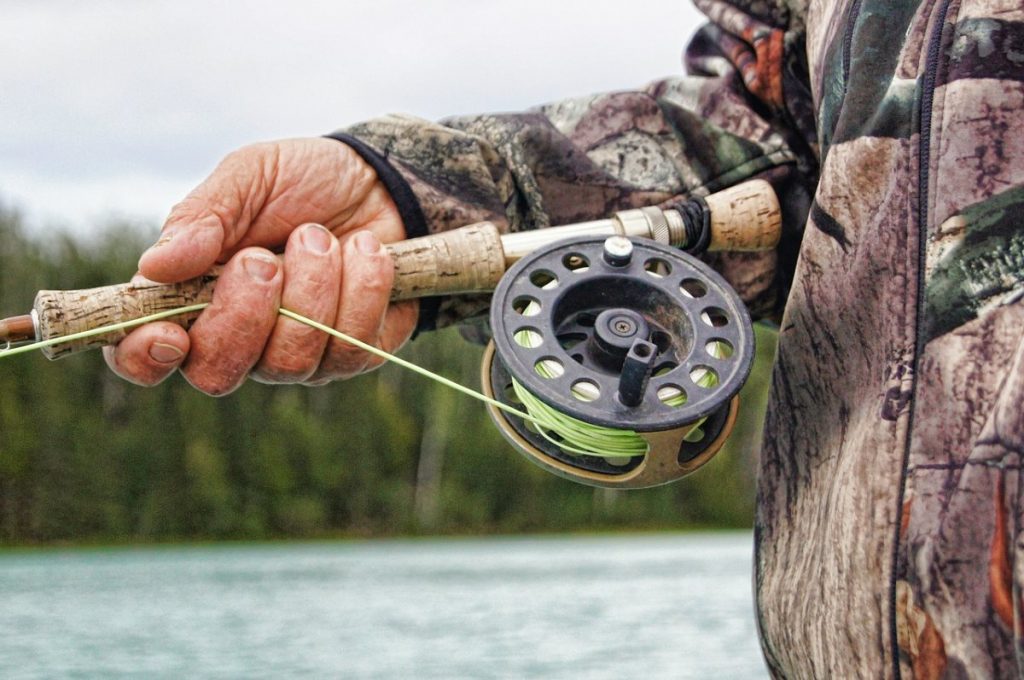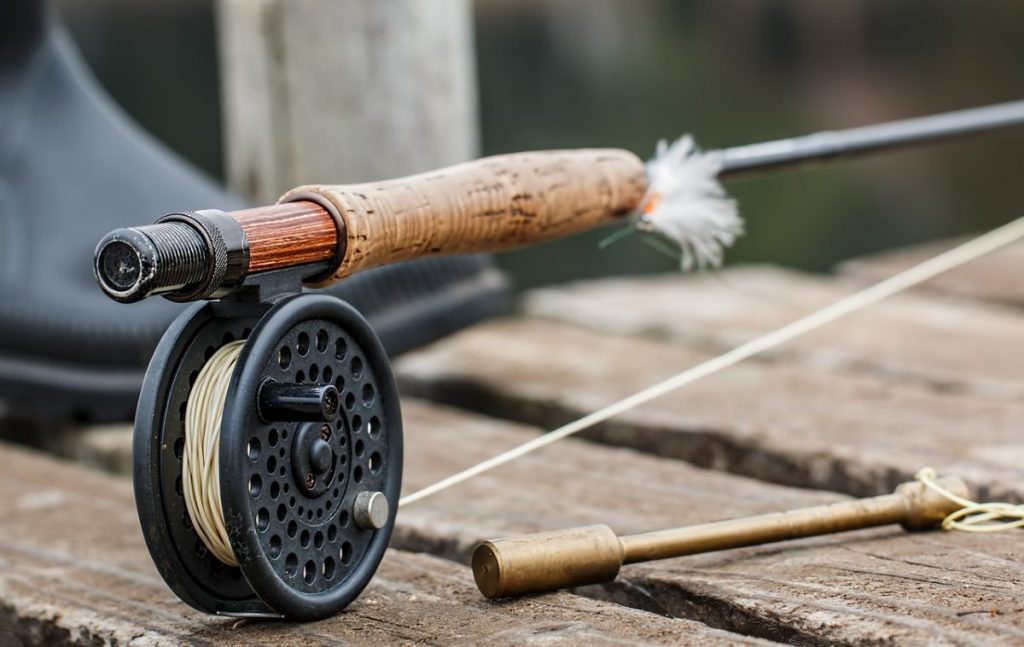For both experienced and amateur anglers it is common knowledge that having the right gear when out fishing can make the difference between going home with a great catch or empty handed. What kind of gear you'll need, depends on what kind of fishing you intend to do and where you intend to do it. For instance, if you're an experienced fisherman and want to go fishing in the middle of a big lake, you'll be needing a fish finder and a kayak.
However, one of the pieces gear that might fly under the radar of beginner anglers are the wading boots. Most people realize just how important they are only when it's too late, generally after a quick involuntary dip. Wading boots will help you stay safe while fishing and not end up soaking wet or, even worse, with a sprained or broken leg at the end of the trip.
Why Are Wading Boots Essential?
The most crucial benefit that wading boots bring to the table is the safety that they provide. Due to their design and build, wading boots ensure reliable traction so anglers can walk over wet rocks or slippery terrain without worrying about falling.
However, safety alone is not the only perk provided by this type of boots – comfort is also a crucial aspect, especially when taking into account the long hours involved with any serious fishing trip. Aching feet or tired legs can quickly go from a slight nuisance to unbearable, forcing you to stop fishing or even ending your whole trip abruptly. At the more severe end of the spectrum, without proper support you can really bust an ankle and this will keep you away from the rivers for weeks.
Grabbing any pair of boots they have at hand is a pretty common mistake made by less experienced anglers, as they consider this fly fishing to be generally safe and harmless. This false sense of security is what leads to many injuries that could be easily avoidable with the proper gear. Of course, just by wearing wading boots you are not guaranteed to never slip or lose your balance, but you will drastically reduce the chances of that happening.
Luckily there is a huge selection of such boots available, varying in overall material quality, durability, comfort and prices. As a rule of thumb, the more you are willing to invest for this piece of gear, the better off you will be and the higher chances you will have to reel in that amazing catch.
What Things to Check on Wading Boots?
When it comes to wading boots, there are several key aspects to be considered when looking through the available catalog. Knowing these will help you identify the perfect pair of boots for your situation and budget:
Rubber Sole
Ideally you should be looking for a pair of wading boots with a rubber sole. While in the past they were considered an inferior option to the ones with felt soles, with better technological processes and improved materials, the roles have reversed. With ingenious patterns and profiles as well as composite rubber structures, the latest models provide superior grip and stability on wet surfaces, be it algae-covered rocks or grassy slopes on the river banks. Soft and malleable, rubber soles allow your feet to more easily “hug” uneven terrain to obtain better balance.
Lightweight
While from the outside fly fishing might seem like a highly static activity, the people that actually practice it know very well that it involves a lot of moving around and walking. This is further compounded by the fact that walking through water is significantly more tiring than strolling on dry land. As such your wading boots should be as light as possible, ideally never weighing more than a pound when dry.
The upper part of the boot plays a crucial role in this – the less water it absorbs and the quicker it dries, the more comfortable you will be able to walk around. Synthetic leather or microfiber are the perfect materials as they are lightweight and flexible as well as evaporating water fast. These also prevent longer-term issues such as mold or nasty smells that other fabrics tend to have after a while due to not drying fast enough and allowing micro-organisms to survive and thrive.
Efficient Drainage
Reliable wading should be able to drain efficiently. When drainage isn't working properly, the boots get heavy and it’s only a matter of time until you get more and more tired and unable to focus on the actual fishing. Reliable wading boots will feature additional drainage canals in the midsoles, which increases the efficiency of the drainage system.
Solid Ankle Support
As hinted earlier, ankle support is vital as anglers are going to walk a lot on various surfaces throughout the day. Uneven terrain, wet and slippery surfaces, debris, all these are just waiting to hurt you. Superior support should feel like it is firmly embracing your ankles but without gripping too hard or “strangling” them. Cheap, low-quality boots can even cut proper blood flow which will cause serious medical issues on the long run.
Lace and Lacing System
You know that old “fishing up a boot” trope? Well, there is a kernel of truth there and many anglers will sometimes snag some old shoe instead of a nice fish. These oftentimes come from some unfortunate fellow angler that had a pair of low-quality boots with a poor lacing system. Being constantly wet will cause cheap laces to fray and snap and you might not even notice that until you take a step. A second later your boot is gone and you're bare-foot, a very dangerous prospect.
The point I'm trying to make is that laces are incredibly important and many times overlooked by people when buying a new pair of wading boots. Solid, waterproof laces are a must, but on top of that many high-quality boots come with a very easy mechanical system which will allow you to easily adjust the tightness. This is also very handy when putting on or taking off the boots, especially when your hands are mucky.
Hydrophobic Coating
Nowadays it's pretty common for the manufacturers to apply special treatments on wading boots to their fabric even more hydrophobic. DWR (Durable Water repellent) is a treatment based on fluoropolymer and Gore-tex is one famous example within the category. Thanks to this type of coating the material isn't going to absorb water or get soaked that easily. It also greatly improves water evaporation so your boots will dry up much faster. In time you can restore the quality and level of this coating by using a waterproofing spray.
Rubber Sole or Felt Soles for Your Wading Boots?
The main difference between the models of wading boots out there comes from the material used for the soles, with rubber and felt as the main competing options.
Rubber sole Wading Boots
In the past this was a pretty much non-debate with felt being the go-to option for practically everyone. This was mainly because rubber soles were made of lower quality materials and bad pattern designs which provided overall poor performance. Coupling this with the fact that many anglers are more conservative when coming to gear choices (why fix something that ain't broken?) and the result was a very slow adoption of the rubber sole wading boots.
However in the recent years the tables have completely turned: great improvements in manufacturing processes and research on composite materials have lead to a significant price drop and much better quality. On top of that we've certainly noticed more and more young anglers joining our ranks and with it increased openness to new technologies when it comes to gearing.
All these factors have pushed rubber sole boots into the spotlight and it seems they are here to stay.
Felt Bottom Wading Boots
There are however still some advantages that might provide felt-sole boots an upper hand. Their wet-surface traction remains superior to rubber ones even today. They also have a more tactile feel to them, allowing you to more easily probe and carefully place your feet.
However this quickly turns into a disadvantage as soon as you're out of the water: walking on mud, wet grass, tree trunks and the like will feel much more slippery than with a pair of rubber sole boots.
Durability has also been a constant problem for this type of material: no matter how it is treated it will still end up fraying and ripping, slowly reducing grip and stability. Over time the cost to replace these will add up and feel like a financial burden.
Lastly, what could be the final nail in felt soles coffin: more and more states are banning these as new environmental research is showing that various micro-organisms will survive inside felt for a long time and will then cross-contaminate other areas where they were not normally native. This can cause great long-term harm to river ecosystems which is a serious thread to an already fragile environment.
Is it Tricky to Find the Right Size and Fit?
While this is not exactly rocket science, it is still a bit more difficult than finding the right size for a pair of sneakers as more factors come into play when we're talking about wading boots.
Generally speaking most anglers will be using some sort of stockingfoot waders (you really should!) or, during warmer months, neoprene wet wading socks. Depending on how thick or bulky these are they can push the size up quite a bit.
For this reason manufacturers will generally adjust the sizing to take these into account. Luckily most online shops will provide very good sizing charts which can be used to correctly identify the right size.
For instance, a great online resource for this can be found at Archery on Target. They have professionally tested and reviewed probably over a hundred different wading boots from various brands and narrowed the list down to a select top choices. You will find great recommendations for pretty much every budget and situation as well as additional pro tips on how to pick the perfect boots for you.
Not only that but they also provide plenty of info about archery, hunting, climbing and other outdoor activities so I highly recommend checking them out.



0 comments